Hockey in Canada 2026
- The system of sports hockey camps and schools in Canada today
- Hockey Camps for Teens in Canada: Key Benefits
- Disadvantages of Hockey Camps, Schools, and Academies in Canada
- What do they teach in children's hockey camps and schools in Canada?
- History of Canadian hockey education. How did hockey schools in Canada become the best in the world?
-
 from 6995.00 $CAD / 4 weeks
from 6995.00 $CAD / 4 weeks -
 from 5300.00 $CAD / 4 weeks
from 5300.00 $CAD / 4 weeks -
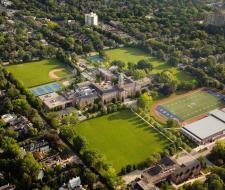 from 34135.00 $CAD / year
from 34135.00 $CAD / year -
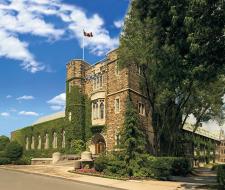 from 64000.00 $CAD / year
from 64000.00 $CAD / year -
 from 2480.00 $CAD / month
from 2480.00 $CAD / month -
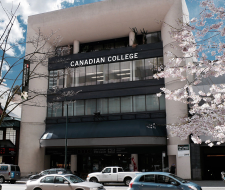
 CanadaVancouver, British ColumbiaCurrently watching: 1from 260.00 $CAD / week
CanadaVancouver, British ColumbiaCurrently watching: 1from 260.00 $CAD / week -
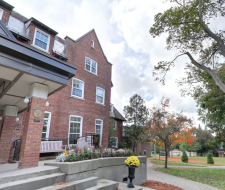 According to information for 2019, an average SAT score made up 1296
According to information for 2019, an average SAT score made up 1296 CanadaOttawa, OntarioCurrently watching: 2from 4900.00 $CAD / 3 weeks
CanadaOttawa, OntarioCurrently watching: 2from 4900.00 $CAD / 3 weeks
-
 100 % University placement from each graduating class
100 % University placement from each graduating class CanadaToronto, OntarioCurrently watching: 6from 74355.00 $CAD / year
CanadaToronto, OntarioCurrently watching: 6from 74355.00 $CAD / year -
 In 2020 the highest grade received towards the IB Diploma - 40
In 2020 the highest grade received towards the IB Diploma - 40 CanadaVictoria, British ColumbiaCurrently watching: 7from 65600.00 $CAD / year
CanadaVictoria, British ColumbiaCurrently watching: 7from 65600.00 $CAD / year -
 65 sport and clubs in PC's co-curriculum program
65 sport and clubs in PC's co-curriculum program CanadaToronto, OntarioCurrently watching: 7from 475.00 $CAD / week
CanadaToronto, OntarioCurrently watching: 7from 475.00 $CAD / week -
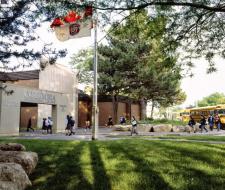 CIC has more top universities in the partnership program than any other school
CIC has more top universities in the partnership program than any other school CanadaToronto, OntarioCurrently watching: 9from 26400.00 $CAD / 10 months
CanadaToronto, OntarioCurrently watching: 9from 26400.00 $CAD / 10 months -
 100 % University placement from each graduating class
100 % University placement from each graduating class CanadaToronto, OntarioCurrently watching: 7from 26200.00 $CAD / term
CanadaToronto, OntarioCurrently watching: 7from 26200.00 $CAD / term -
 from 3100 $CAD / 2 weeks
from 3100 $CAD / 2 weeks -
 Top Areas of Study in 2023: STEM – 41 % Medical and Health – 12 %
Top Areas of Study in 2023: STEM – 41 % Medical and Health – 12 % CanadaOttawa, OntarioCurrently watching: 10from 4500.00 $CAD / 3 weeks
CanadaOttawa, OntarioCurrently watching: 10from 4500.00 $CAD / 3 weeks -
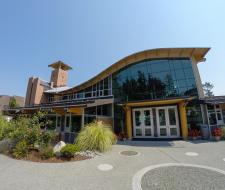 This past year, 70% of the graduating class received an offer of admission from their firs
This past year, 70% of the graduating class received an offer of admission from their firs CanadaVictoria, British ColumbiaCurrently watching: 10from 33320.00 $CAD / semester
CanadaVictoria, British ColumbiaCurrently watching: 10from 33320.00 $CAD / semester
Canada is rightfully considered the birthplace of hockey. This sport is not just a popular entertainment here - it has long and firmly become part of the national culture, one of the best training systems for young hockey players has been formed here, thanks to which the national team and NHL clubs are regularly replenished with talented players. Hockey camps, schools and academies in Canada offer young athletes unique opportunities for development, but, like any educational and sports system, they have their own advantages and features.
Alternative destinations
The system of sports hockey camps and schools in Canada today
Today, Canada has an extensive system of preparing hockey players, including different levels of hockey training:
Hockey Camps
Camps have become an integral part of the development of young players. Today, they are divided into several types: entertaining, designed for beginners and children who just want to improve their skating skills; elite, where hockey players seeking to get into strong junior teams are offered intensive and rich programs, as well as trial camps organized with the support of clubs - scouts here select promising players
Hockey schools and academies
There are several dozen hockey schools in the country, offering programs of varying intensity, duration and cost. Among the most famous are:
- Okanagan Hockey Academy, Hill Academy, Edge School for Athletes are elite hockey schools that combine academic education and hockey training.
- Canadian International Hockey Academy is the largest school that accepts international students on a non-competitive basis.
Training programs are adapted to the requirements of modern trainers, including work with analytics, tactics and psychological preparation. Many academy graduates make it to the CHL (Canadian Hockey League), NCAA (National Collegiate League of the United States), and professional NHL clubs.
Hockey Camps for Teens in Canada: Key Benefits
- High level of training and professional coaches
Canada has some of the best coaches in the world, including many former NHL players and IIHF-certified professionals. Training programs are developed taking into account modern scientific methods, much attention is paid to the individual development of each player, analysis of skating technique, throwing and tactical thinking.
- Developed hockey infrastructure
Hockey sports camps in Canada provide first-class conditions for training: modern skating rinks, gyms, and rehabilitation centers. Many academies operate at professional clubs and have access to elite sports complexes.
- Constant game practice and participation in leagues
Players get the opportunity to participate in strong junior leagues such as the CHL (OHL, WHL, QMJHL), USL, and NCAA Collegiate Championships. Internal tournaments and friendly matches help to develop playing skills and prepare for a professional career. Finally, students will have regular auditions and meetings with scouts from NHL clubs and international teams.
- Full immersion in hockey culture
In Canada, hockey is more than just a sport, it's part of a national identity!
- Academic education and sports career
Many hockey academies in Canada allow you to combine hockey with your studies, giving athletes a chance to receive scholarships at top universities; graduates can continue their studies in the NCAA or U Sports to not only pursue a hockey career, but also a higher education. Well, if things don't work out with professional hockey, there will always be backup options.
- Physical and mental training
Training is aimed not only at the development of game skills, but also at general physical preparation, strengthening speed, endurance. The program even stipulates psychological preparation to help cope with the stress and pressure of competition.
- International connections and opportunities
Players from all over the world train in the academies, which not only expands the circle of contacts and opens up international perspectives, for example, allows you to establish contacts with coaches, agents and clubs from Europe and North America.
Disadvantages of Hockey Camps, Schools, and Academies in Canada
- High cost
Education and training in Canada's elite hockey academies are not cheap: from 20,000 to 50,000 CAD per year, without the cost of equipment, accommodation and travel. There are scholarships, but it is not easy to obtain them.
- Fierce competition
Hockey is the most popular sport in Canada, and the competition among players is extremely high: only few are lucky enough to get into the NHL or professional clubs, and studying here is associated with a high workload.
- Physical and emotional stress
Intensive training, frequent games and competitions require serious physical preparation. Athletes face the risk of injury and serious emotional pressure caused by high competition, the need for constant improvement, psychological stress due to possible failures.
- Separation from family and difficulties in adaptation
For international students and even Canadian children from other provinces, studying at an academy means a long time away from their families: they will have to adapt to a new way of life, face a language barrier (if English or French is not their native language), and quickly learn independence.
What do they teach in children's hockey camps and schools in Canada?
Every morning in hockey camps and academies begins with ice training, where athletes work out the key elements:
- Skating is the correct stance, start, acceleration, braking, maneuverability.
- Puck control – feints, dribbling around opponents.
- Passes and shots are work on the accuracy, power and its speed.
- Defensive play – positioning, blocking shots, getting out of pressure.
- Playing in attack is tactical thinking, interaction with partners, finishing attacks.
Many teen hockey camps in Canada use advanced game analysis technology, including video recording of practices and sensors to track the speed and accuracy of shots. The duration of training in total can reach 6-8 hours a day.
Much attention is paid to the strategic and tactical aspects of the game. In theoretical classes, athletes study:
- A system of command defense and attack;
- Different tactical schemes (forechecking, positional defense, playing on the power play and shorthanded, etc.);
- Interaction between forwards and defenders;
- Reading the game, analyzing the actions of opponents, making quick decisions.
Hockey is not only a physical game: the load on the "head" of players can also be very significant, so sports psychologists work in academies and schools in Canada to teach athletes to manage stress before matches, effectively build a strategy for interacting with other team members, and deal with burnout and psychological pressure.
Finally, coaches in children's hockey schools in Canada pay tremendous attention to the formation of the character of athletes - hockey schools and academies teach:
- Responsibility for the team and their actions;
- Ethical behavior, respect for opponents, coaches and referees.
- Discipline and self-control.
In general, children's hockey camps, schools and academies in Canada offer one of the best player training systems in the world. Here they do not just teach to throw the puck, but temper character, help develop discipline and develop strategic thinking and vision of the playing field. Such an integrated approach gives graduates of Canadian academies a chance to become professional hockey players and successfully build their careers in the world of big sports. If a child dreams of a hockey career, studying in Canada will be a great start for him!
History of Canadian hockey education. How did hockey schools in Canada become the best in the world?
The history of hockey education in Canada begins in the first half of the 20th century, when hockey became a professional sport. During this period, Canadian cities and towns began to actively build skating rinks and conduct regular training for children.
- 1920s – 1930s: the first organized children's hockey leagues;
- 1940s: the development of junior hockey, the emergence of coaches working with young players;
- 1950s: the foundation of the first summer hockey camps, where children came not only for training, but also for general physical development.
At first, hockey programs were unofficial, with young players training under the guidance of enthusiasts and former professional athletes. However, as competition for places on professional teams increased, the need for more structured training arose.
In the 1960s, specialized hockey camps for children began to appear in Canada - their purpose was not only to develop playing skills, but also to prepare for admission to junior leagues and university teams.
- In 1961, St. Michael's College School in Toronto was founded, the first school where academic and athletic instruction took place in parallel.
- 1960s – 1970s – popularization of summer hockey camps. Coaches began to introduce methods of general physical training, increasing the level of general physical training of players.
During this period, large hockey academies began to form in Canada, working according to the European model, but adapted to the Canadian style of play - with aggressive attacking tactics and physically strong players.
The real boom in hockey academies and the development of professional training fell on the nineties and noughties, when, with the advent of large sponsorship contracts and the development of the NHL, the system of training hockey players in Canada is becoming more professional. At the same time, elite hockey academies were created, such as Shattuck-St. Mary's and Athol Murray College of Notre Dame has been a core supplier to major junior league and NHL players since the late 1990s.
In the noughties, they were joined by the Okanagan Hockey Academy, one of the first academies operating on the principle of "hockey + study".
The emergence of private hockey schools also dates back to this period: parents, seeking to provide their children with a professional future, began to invest in specialized programs that gave them the opportunity not only to get into the junior league, but also to receive hockey scholarships at universities in the United States and Canada.
At the same time, hockey camps became not only training bases, but also platforms for scouting: representatives of university teams and youth teams began to attend the camps, which gave players a chance to be noticed.
